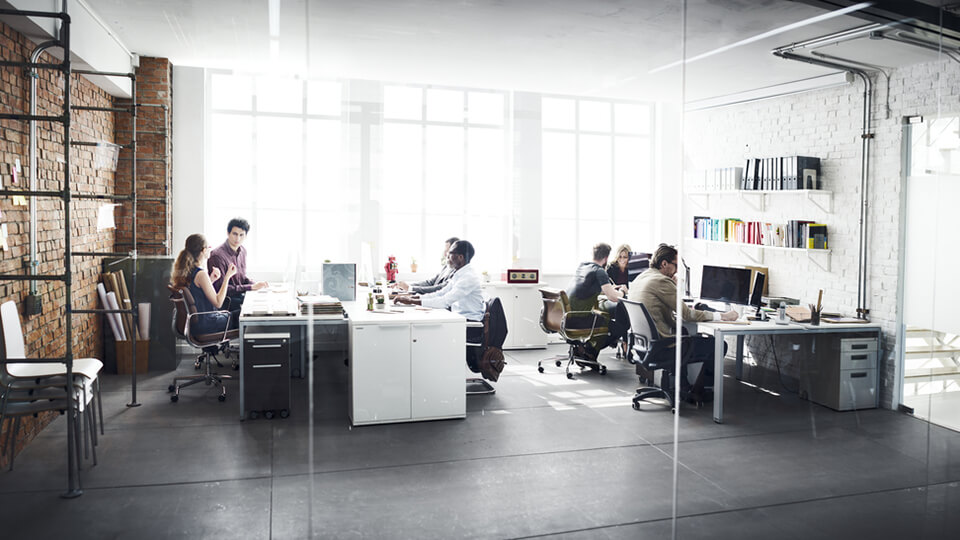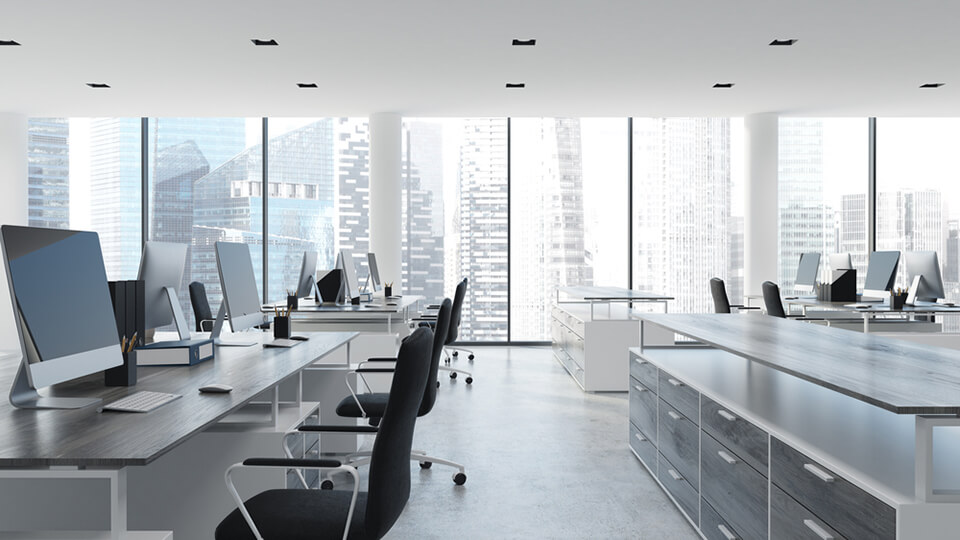What Is A Right-Sized Workplace?
A right-sized workspace optimizes spaces and intentionally uses each square foot. If you have empty meeting rooms and desks that haven’t been used in years, now is the time to update your offices and right-size your workplace.
Right-Size Workplace Definition
A right-sized workplace is an office space that efficiently fits the needs of those that use it. Investing in real estate is more dynamic now than it has ever been. Specifically, the workforce shifted from in-office to hybrid or remote work policies. Further, this shift has a major impact on determining the proper size of any workplace. The expectations of workers are changing. Plus, the office needs to change with them. Stagnant real estate design doesn’t serve them well. In addition, traditional workplace norms from a decade ago are not the same. As new generations join the workforce, they will keep changing. Thus, a right-sized workplace is dynamic and adaptable to the changing needs of its users.
Before the pandemic, when all workers were coming into the office every day, your office may have taken up the whole floor of a building. However, now that workers want more flexibility to work from home you now face a major amount of empty, wasted space. The negative financial and environmental impacts of this extra space are huge!

Designing a right-sized workspace goes beyond the quantity of necessary square feet. To explain, it extends to company policies around hotel or hot desks that can be booked when employees come to the office. Plus, it provides employees the types of spaces they need when they come to the office. And it helps employees book the spaces they use. Specifically, collaboration spaces are important for a right-sized workplace as workers commute into the office to spend time with colleagues, not perform heads down work that they can do from home.
A right-sized workplace leads to an efficient office and happier, more productive workers and serves as an investment in the future success of your company. While designing a right-sized workplace is no small task, it is achievable through thoughtful consideration, involvement of the necessary stakeholders (workplace strategists and facilities managers in particular) and a bit of technology.
Downsizing vs Rightsizing a Workplace
Before we continue, it’s important to know the difference between downsizing and right-sizing. Downsizing is an automatic loss of office space while right-sizing does not always include reducing the square footage of an office. In fact, right-sizing could actually include increasing the physical size of an office. For instance, some offices properly right-size by adding collaboration spaces, training rooms and event centers to support employee engagement, even with a hybrid work policy. Whether right-sizing results in more or less space, updating how your company uses its square footage based of the needs, behaviors, and patterns of your workers will undoubtably have a positive impact.
Right-Sized Workplace Benefits

In general, a right-sized workplace is flexible, efficient, and inclusive. For instance, some right-sized workplace benefits include the following:
1. Happier workers.
Employees want to be provided the tools necessary to successfully do their work. Having a right-sized office is inherently aligned with this goal.
Why is this important?
Workers are happier when their employer supports them resulting in lower turnover, higher productivity and improved recruitment of new employees.
2. More inclusive workplace.
A workplace must suit the needs of all types of employees including fully on-site, fully remote, and hybrid workers.
Why is this important?
A right-sized workplace supports a more dynamic workforce, allowing you to improve your ability to recruit, hire and retain a more diverse workplace.
3. Reduced carbon footprint.
Buildings account 38% of the world’s carbon emissions and are significantly underutilized.1
Why is this important?
Through right-sizing the workplace, your building will only emit what is totally necessary for employees to succeed. Through improved HVAC operations, smart lighting and efficient use of square footage, carbon emissions are drastically reduced.
4. Save money on real estate costs.
Approximately 40% of office space sits empty at any given time.2 Through right sizing, you may be able to reduce your total square footage and therefore reduce costs related to rent, utilities and information technology.
Why is this important?
Every business is looking to improve its bottom line. Providing a right-sized workspace in many cases is a great way to reduce costs while also improving the employee experience.
How to Right-Size Your Workplace

1. Ask your team.
Before you make major changes to your office, you should find out what is and is not working for your workers. Plus, you need to know how and where they want to work in the near future. To do this, conduct a workplace survey. Then use workplace behavior data to cross-reference the results.
2. Audit your current office usage and layout with technology.
In most cases, sensor technology is a great way to verify survey results with usage data from whole sections of the office, individual desks, individual executive offices, conference rooms, and meeting rooms. With a workplace analytics tool like VuSpace, you will have the data you need to create a plan that restructures, renovates, and revitalizes your workspace. Thus, it will be right-sized.
Right-sizing needs to be a data-drive decision. By collecting both qualitative data through surveys and quantitative data through sensors, you will be well equipped to make the best decision for your office.
3. Offer different types of workspaces for different work styles.
After evaluating your current office, you will need to decide on the proper mix of works spaces going forward:
- Workstations
- Quiet spaces
- Collaborative spaces (communal seating in a cafe-style area)
- Amenities based on needs for workers and objectives (meeting technology for hybrid teams)
- Social spaces to unwind since workers come into the office due to missing office work connections
Now that your space is flexible while meeting the needs of remote, in-office, and hybrid workforces, you just need to supplement it with best-in-class technology throughout your workplace. The technology, including workspace booking, real time occupancy data and wayfinding, exists to support a fantastic experience for both in office and remote employees.
Fortunately, Avuity workplace sensors assist in tracking the success of these design changes, cost savings related to improved utilization, and employee space usage. For help with right-sizing hybrid workplaces, consider these tools.
1 https://www.unep.org/news-and-stories/press-release/building-sector-emissions-hit-record-high-low-carbon-pandemic
2 https://www.us.jll.com/en/space-utilization?report=oputilization




Leave a Reply
Want to join the discussion?Feel free to contribute!